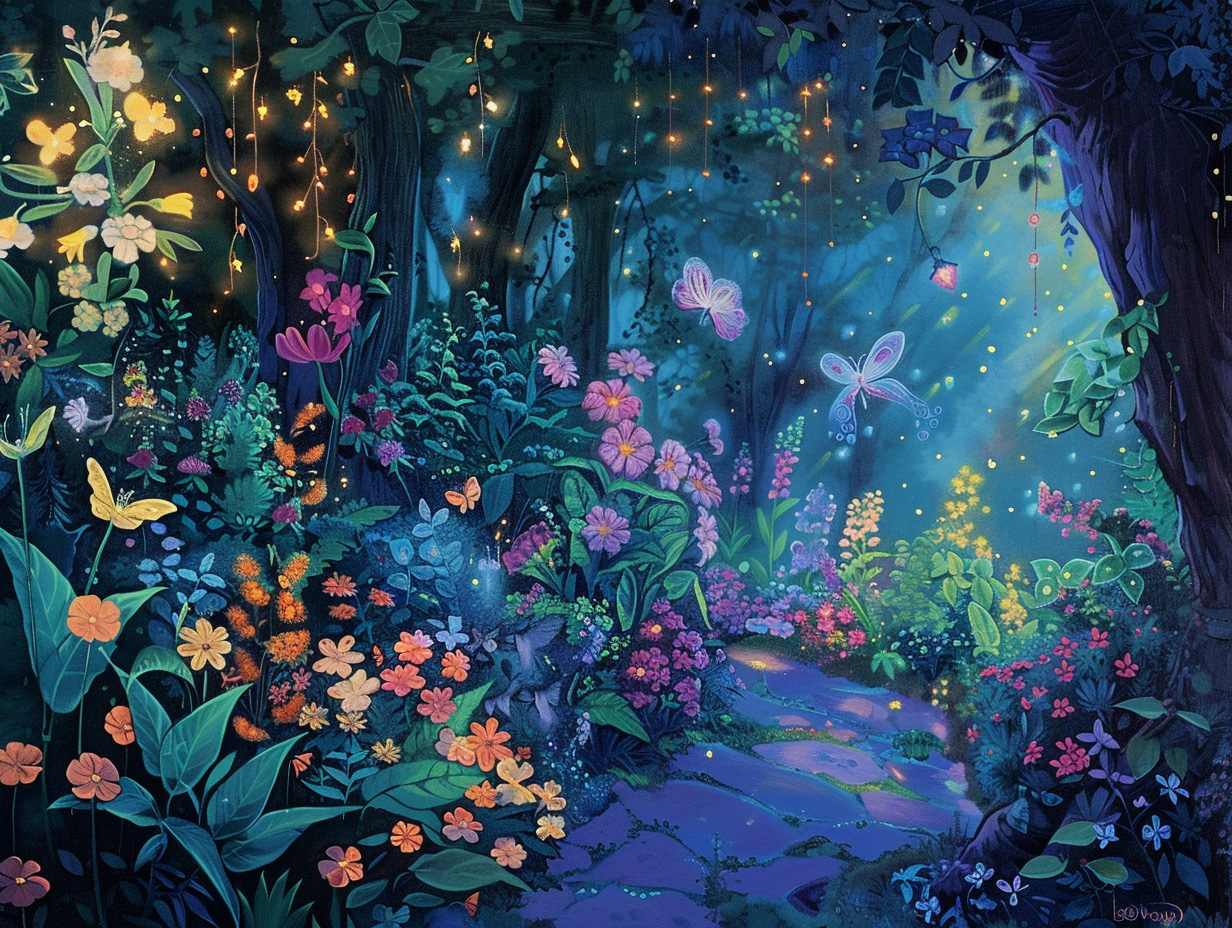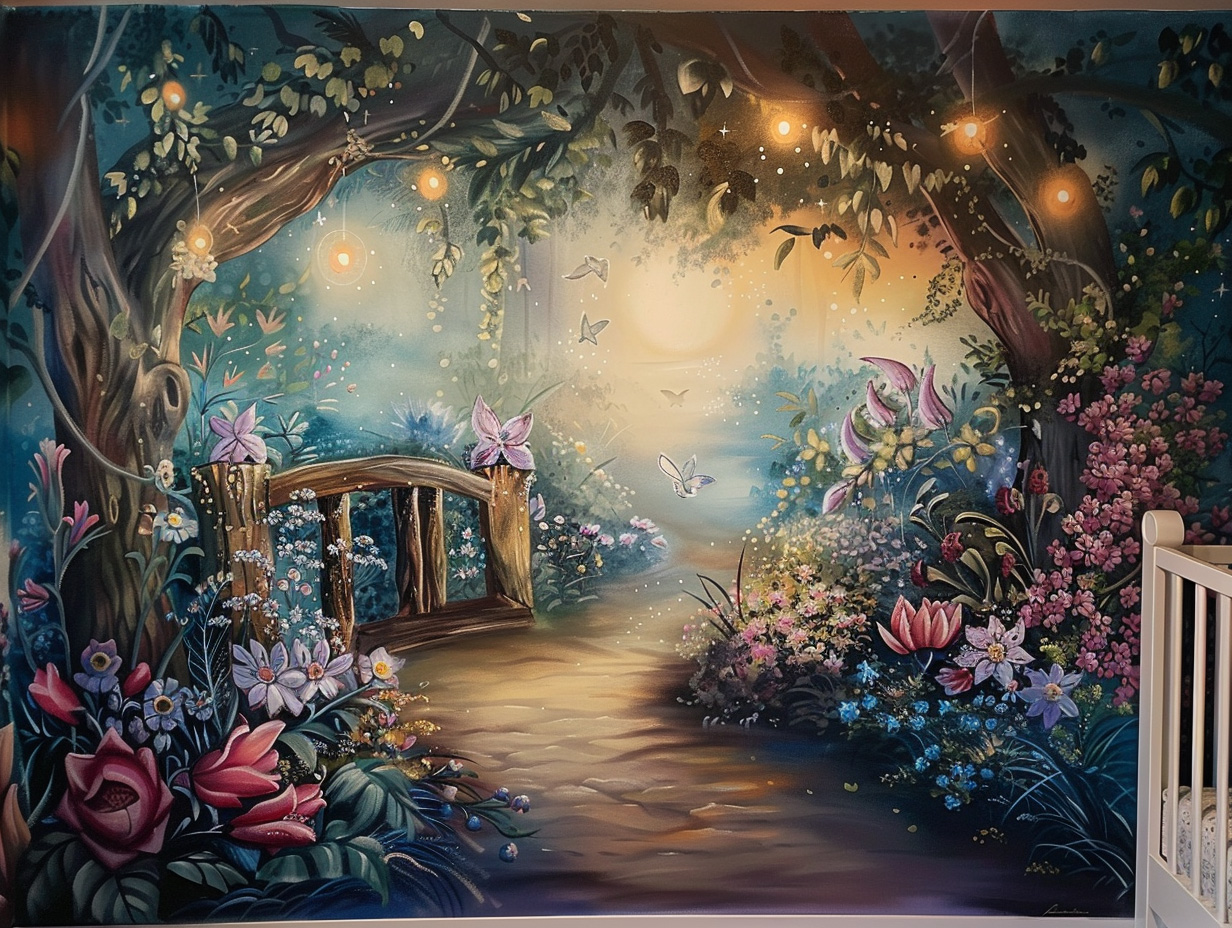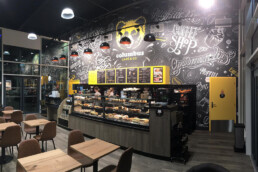Fairy gardens, more than just decorations, are portals that transport young dreamers into a land where the ordinary transforms into the extraordinary, where every corner holds a secret waiting to be discovered. When it comes to creating enchanting spaces for young minds to roam free, the allure of fairy garden themes knows no bounds. From Dubai nursery decor to magical murals adorning fantasy bedrooms, the infusion of these whimsical designs transcends mere ornamentation, weaving a narrative of endless possibilities. Each element, carefully curated to evoke a sense of wonder and curiosity, paints a canvas where imagination dances hand in hand with reality. Join us as we delve into the mesmerizing world of fairy garden theme, exploring how these captivating creations breathe life into children’s rooms, stirring their souls with the promise of untold
 adventures.
adventures.
Designing a Magical Fairy Garden
Designing a magical fairy garden is an art that requires careful thought and consideration. It is a process that involves creating a miniature world filled with enchantment and wonder. The key to designing a successful fairy garden lies in the attention to detail and the incorporation of elements that capture the essence of magic.
When designing a fairy garden, it is important to consider the overall theme and aesthetic you wish to achieve. There are various types of fairy garden themes to choose from, each offering its own unique charm. Whether you opt for a whimsical woodland theme or a mystical fairy tale setting, the possibilities are endless.
To create an enchanting fairy garden, start by selecting the perfect container or space for your miniature world. This could be a small planter, an old teacup, or even a dedicated corner in your backyard. Once you have chosen your container, it’s time to bring your vision to life.
Begin by adding soil or moss as the base for your fairy garden. This will provide a natural foundation for your plants and accessories. Next, carefully select plants that will thrive in your chosen environment. Consider using small flowers, succulents, or even herbs to add color and texture to your fairy garden.
Once you have planted your greenery, it’s time to add the magical touches that will truly bring your fairy garden to life. This can include miniature furniture such as benches or tables, tiny houses or cottages for the fairies, and whimsical decorations like tiny lanterns or birdhouses.
To complete the look of your magical fairy garden, consider adding twinkling lights or small water features such as fountains or ponds. These elements will add an extra layer of enchantment and create a sense of wonder for those who enter this miniature realm.
Designing a magical fairy garden is a creative and rewarding process. It allows you to tap into your imagination and create a world where dreams come true. Whether you are designing a fairy garden for your child’s room or as a centerpiece for your backyard, the key is to let your creativity soar and embrace the magic that comes with it.

Bringing Fairy Gardens Indoors: Creative Ideas
Fairy gardens are not limited to outdoor spaces. They can also be brought indoors, adding a touch of whimsy and enchantment to any room. Whether you are looking to create an imaginative play area for your child or add a magical element to your home decor, there are plenty of creative ideas for bringing fairy gardens indoors.
One idea is to create a fairy garden terrarium. This involves using a glass container, such as a jar or vase, and filling it with soil, plants, and miniature accessories. The transparent walls of the terrarium allow you to see the intricate details of the miniature world inside while keeping it protected from external elements.
Another creative idea is to incorporate fairy garden elements into wall art or murals. This can be done by painting or stenciling images of fairies, woodland creatures, or magical landscapes onto walls. Adding three-dimensional elements such as small figurines or hanging decorations can further enhance the whimsical effect.
If you have limited space, consider creating a vertical fairy garden by using hanging planters or shelves. This allows you to maximize space while still creating an enchanting display. You can also use wall-mounted containers or shadow boxes to showcase miniature scenes.
Incorporating fairy garden elements into furniture and decor is another way to bring the magic indoors. Look for furniture pieces that feature whimsical designs such as mushroom-shaped stools or tables with intricate carvings. You can also add fairy garden-inspired accessories such as fairy lights, dreamcatchers, or fairy wings to create a magical atmosphere.
When bringing fairy gardens indoors, it is important to consider the overall theme and aesthetic of the room. Choose colors and materials that complement your existing decor and create a cohesive look. Remember, the goal is to create a space that sparks imagination and invites wonder.
Inspiring Creativity and Imagination in Children
Fairy gardens have long been recognized as a powerful tool for inspiring creativity and imagination in children. These enchanting spaces provide a canvas for young minds to explore, dream, and create their own magical worlds.
One of the key benefits of fairy gardens is that they encourage open-ended play. Unlike traditional toys or games with predetermined rules, fairy gardens allow children to use their imagination freely. They can invent stories, role-play with miniature characters, and engage in creative problem-solving.
Through the process of designing and maintaining a fairy garden, children develop important skills such as planning, decision-making, and responsibility. They learn about the needs of plants and how to care for them. They also develop an understanding of design principles such as balance, proportion, and harmony.
Fairy gardens also provide an opportunity for children to connect with nature. By creating a miniature ecosystem within their garden, they learn about the importance of plants and animals in our environment. They develop a sense of empathy towards living creatures and gain an appreciation for the beauty of nature.
Furthermore, fairy gardens can serve as a source of inspiration for storytelling and writing. Children can use their garden as a backdrop for imaginative tales or even write their own fairy stories. This not only enhances their literacy skills but also nurtures their creativity and self-expression.
In today’s digital age where screens dominate much of children’s playtime, fairy gardens offer a refreshing alternative. They provide a hands-on, sensory experience that engages all the senses and encourages active play. By stepping into the world of fairy gardens, children can disconnect from technology and reconnect with their own imagination.
Types of Fairy Garden Themes
When it comes to fairy garden themes, the possibilities are endless. Each theme offers its own unique charm and allows for creative expression. Here are some popular types of fairy garden themes to consider:
1. Woodland Wonderland: This theme is inspired by the enchanting beauty of forests and woodlands. It features elements such as moss-covered trees, tiny woodland creatures like squirrels and rabbits, and magical mushrooms.
2. Fairy Tale Fantasy: This theme brings classic fairy tales to life with miniature castles, princesses, and knights. It captures the essence of magical kingdoms and invites children to create their own stories.
3. Beach Bliss: This theme is perfect for those who love the ocean and beach vibes. It includes miniature beach chairs, seashells, mermaids, and even tiny surfboards.
4. Secret Garden: This theme is all about hidden treasures and secret hideaways. It features elements like hidden doors, winding paths, and lush greenery.
5. Urban Oasis: This modern twist on fairy gardens incorporates elements of city life such as miniature skyscrapers, tiny cars, and rooftop gardens.
No matter which theme you choose for your fairy garden, remember to let your imagination run wild. Mix and match elements to create a unique space that reflects your child’s interests and personality.

Enchanting Fairy Garden Examples
To truly understand the magic of fairy gardens, let’s explore some enchanting examples:
1. The Enchanted Forest: This fairy garden features towering trees, a babbling brook, and a tiny wooden bridge. Fairies can be seen flitting among the flowers, while woodland creatures peek out from behind bushes.
2. The Fairy Tea Party: This whimsical garden is set up for a magical tea party. Tiny tables and chairs are adorned with delicate tea sets, and fairies gather around to enjoy their treats.
3. The Fairy Village: This expansive fairy garden is like a miniature village with tiny houses, shops, and even a town square. Each building is intricately designed and offers endless opportunities for imaginative play.
4. The Mermaid Cove: This underwater-themed fairy garden features a shimmering blue pond with miniature mermaids swimming among colorful coral reefs. Seashells and starfish complete the magical scene.
5. The Zen Garden: This serene fairy garden incorporates elements of Japanese gardens with miniature bonsai trees, stone pathways, and tranquil water features. It provides a peaceful retreat for both fairies and humans alike.
These examples are just a glimpse into the world of fairy gardens. Each one showcases the creativity and imagination that can be unleashed through these enchanting creations.
In conclusion, fairy gardens are more than just decorations; they are gateways to magical realms where children’s dreams come true. Whether you choose to design an outdoor oasis or bring the magic indoors, fairy gardens have the power to inspire creativity, ignite imagination, and create lasting memories for young dreamers.
Related Posts
31 mars 2024
How to Choose the Right Graffiti Artist for Your Dubai Business?
As businesses in this dynamic…
17 mai 2023
Breathe Life into Your Walls: Transforming Interiors with Art in Dubai
While there are various options…


